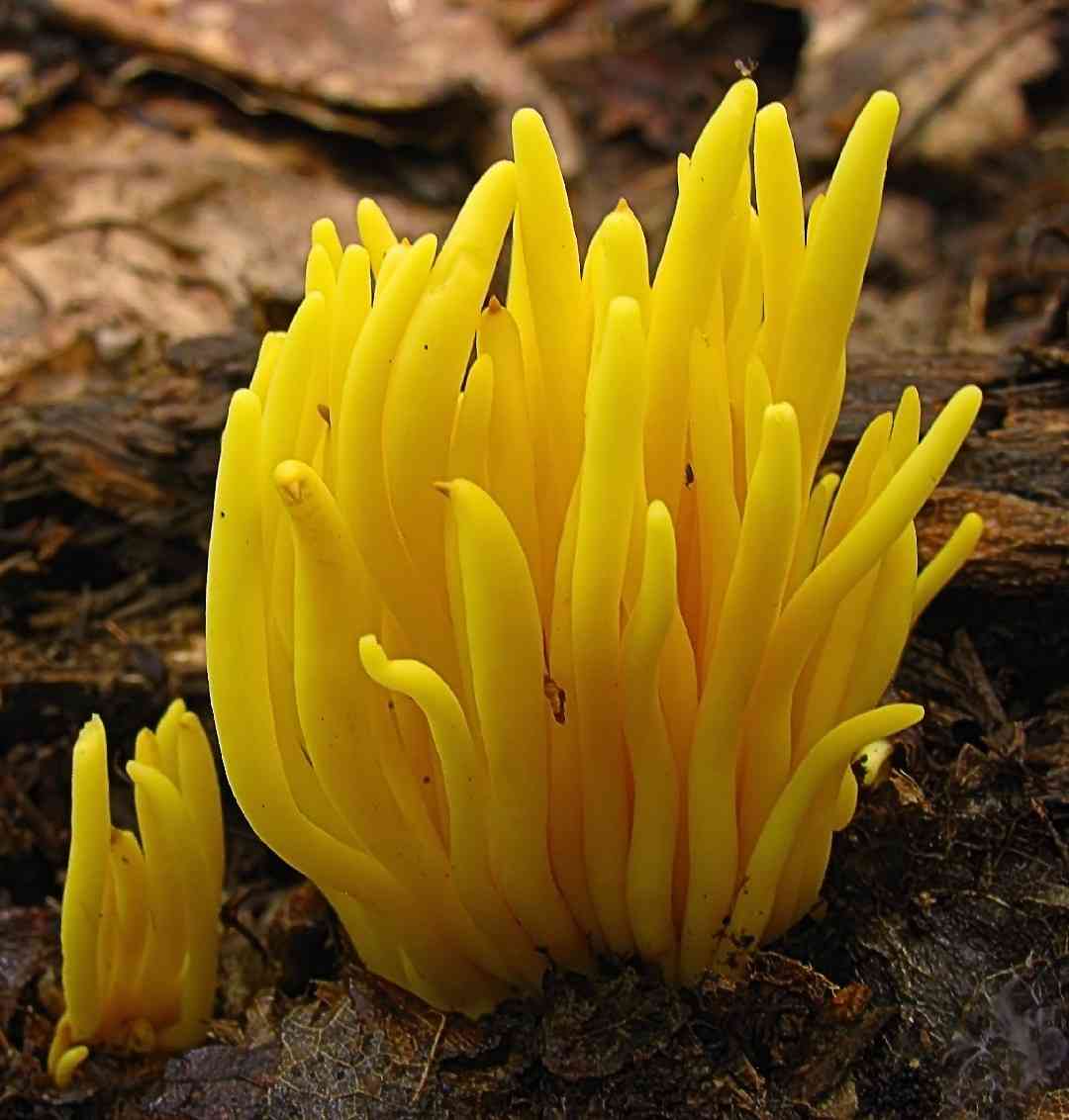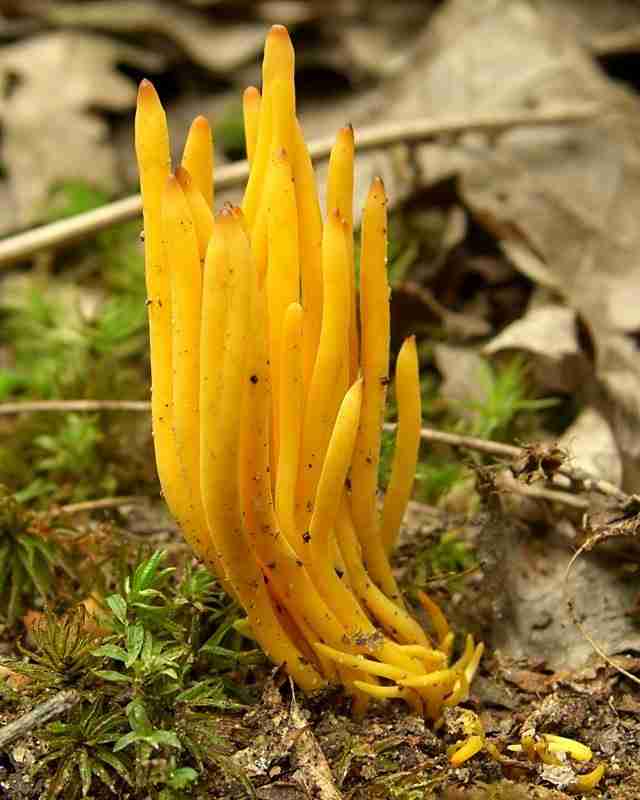
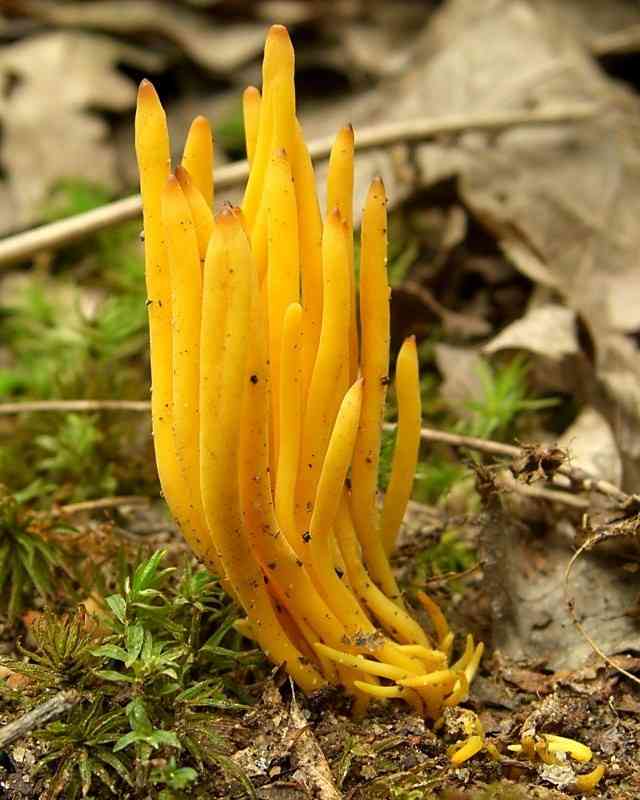
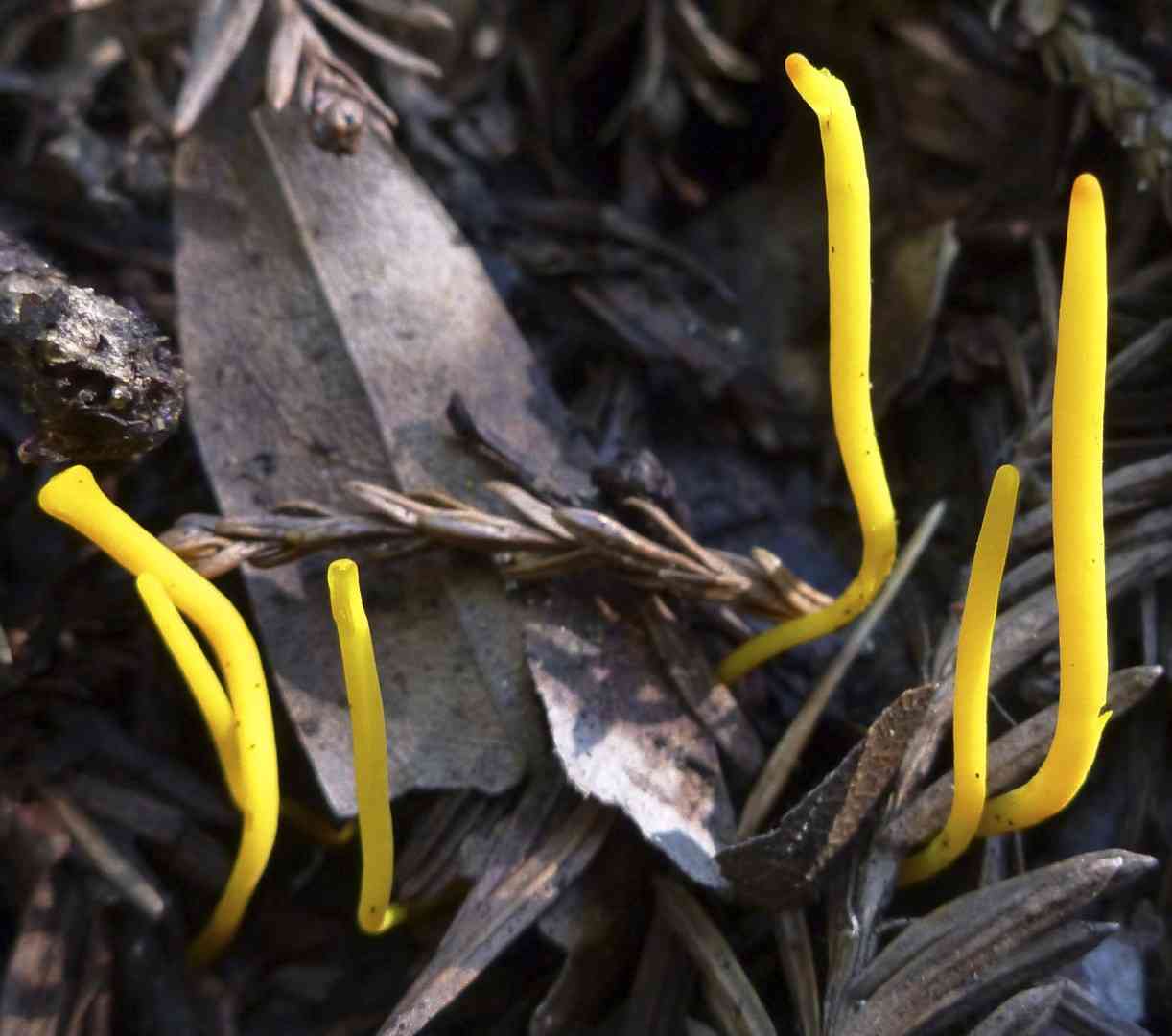
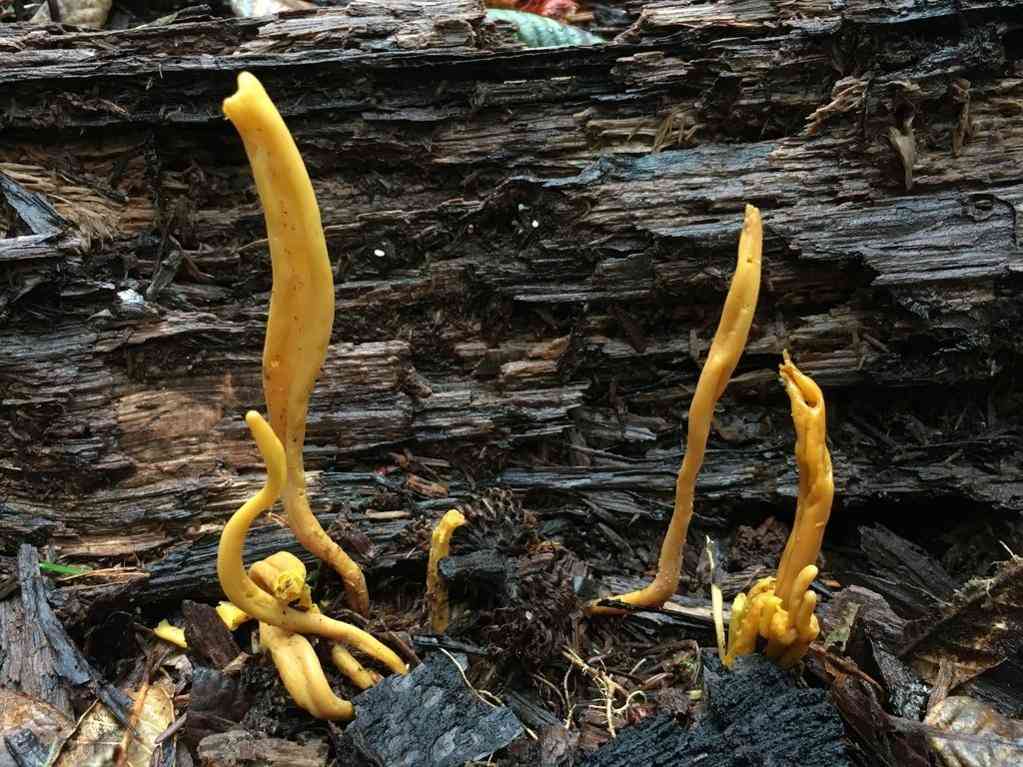
Handsome club
Clavulinopsis laeticolor
A species of Clavulinopsis.
The attractive club fungus is quite easy to overlook. This small mushroom, only a few centimeters tall, typically grows solitarily on coniferous and deciduous trees. Yet, its striking bright yellowish-orange hue brings a splash of color to the otherwise muted, moss-covered stumps.
In This Article
Attributes of Handsome club
Cap Diameter
1 - 4 mm
Height
1.7 - 5 cm
Cap
1 - 4 mm wide; somewhat pointed; ages or discolors somewhat reddish or orange
Stem
1.7 - 5 cm high; cylindrical, or with a groove or a twist; bright orange or yellow, fading with age, whitish at the extreme base
Flesh
Thin; whitish to pale yellow or orange
Spore Print Color
White
Odor
Mildly mushroomy but not distinctive.
Body Color
YellowWhiteOrange
Flesh Bruises
The flesh or milk does not discolor when bruised or cut.
Growth Form
Solitary, Scattered, Gregarious
Nutrient Gathering
Saprophytic
Substrate
On soil, Mosses, Leaf or Needle Litter
You can find Handsome club by these plants
Pines, Spruces, Oaks, Junipers, Hawthorns
Occurence Habitats
Deciduous Woodland, Coniferous Woodland, Mixed Woodland
Species Status
Widely distributed in North America
Endangered Species
No
Scientific Classification of Handsome club
Phylum
Club fungi
Class
Mushroom-forming fungi
Order
Gilled fungi
Family
Coral fungi
Genus
Clavulinopsis
Toxicity and Edibility of Handsome club
Is Handsome club Toxic?
Toxicity information is not available for this mushroom. Always consult with an expert before consuming any wild mushrooms.
